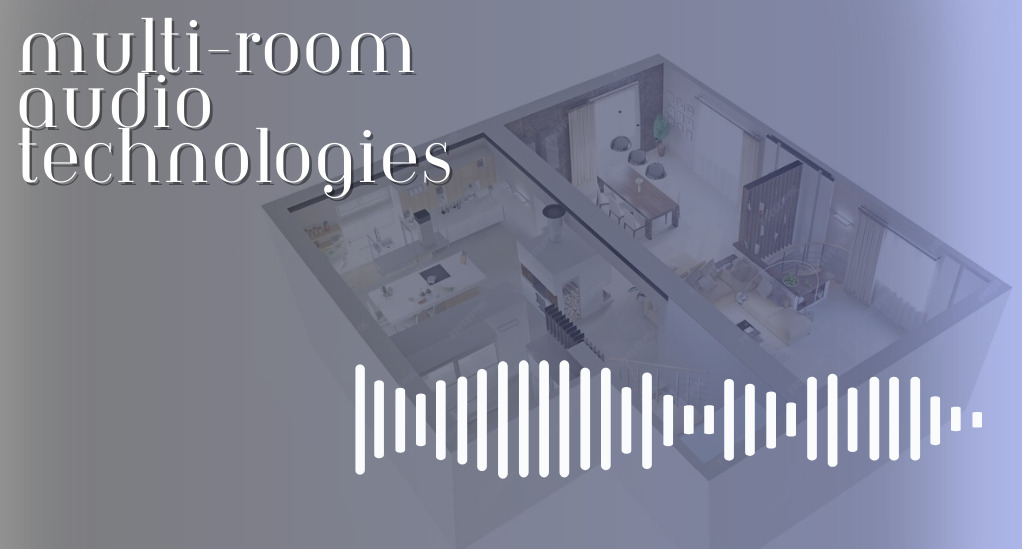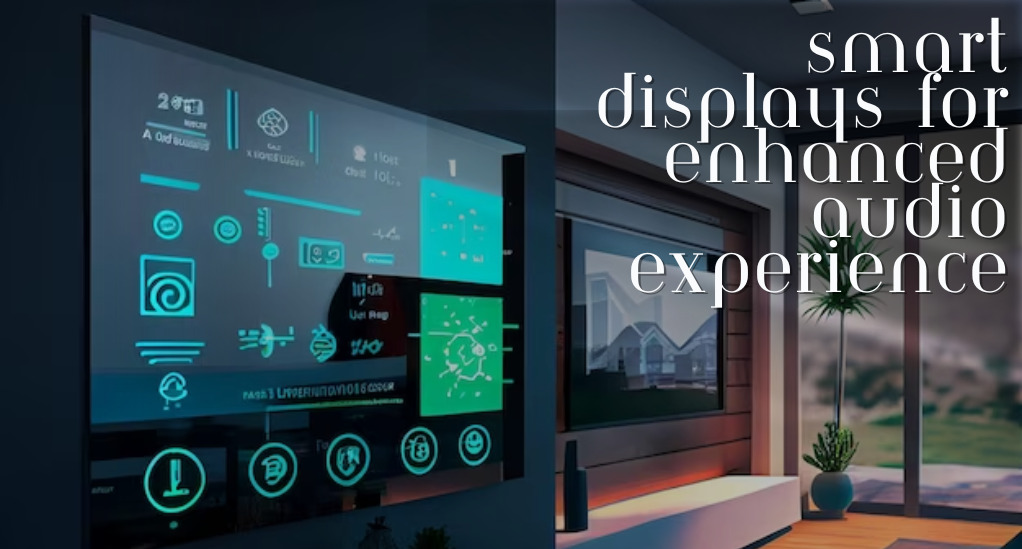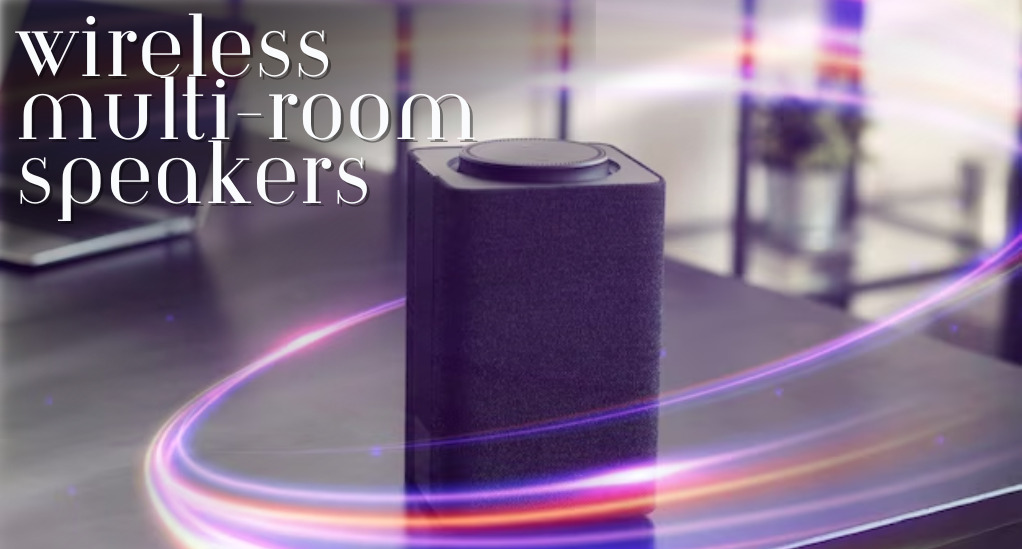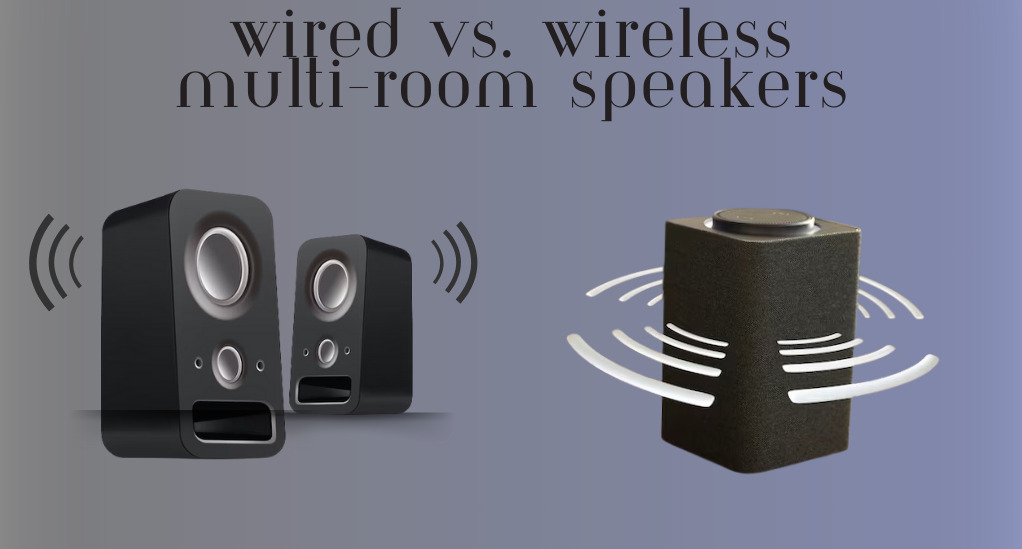
How to Set Up Multi-Room Audio with Smart Speakers
In today’s technologically advanced world, the way we experience sound has undergone a revolutionary transformation. Gone are the days when multi-room audio was a luxury reserved for commercial spaces like malls and upscale restaurants. Now, with the advent of smart homes and innovative audio technologies, the dream of having a seamless music experience as you move from room to room is not just achievable but also surprisingly affordable.
The Evolution from Commercial Spaces to Smart Homes
Historically, multi-room audio systems were complex, expensive, and primarily used in commercial settings. These systems allowed businesses to play background music or announcements across large areas, ensuring that the sound was consistent and clear, regardless of where you were in the building. However, as technology advanced and became more accessible, the desire for similar systems in residential settings grew.
Enter the era of smart homes. With the integration of IoT (Internet of Things) devices, homes have become more connected than ever. From smart thermostats to intelligent lighting, every aspect of our living space can now be controlled with a tap on our smartphones. And audio is no exception. Modern smart homes have made it possible to set up multi-room audio systems that rival those of commercial spaces, but with the added benefit of personalization and ease of use.
The Seamless Experience of Music in Every Room
Imagine this: You’re hosting a dinner party, and as your guests move from the living room to the dining area, the soft jazz music they were enjoying continues to play, uninterrupted. Later, as some guests move to the patio, the same tunes accompany them, creating a cohesive and immersive audio experience. This is the magic of multi-room audio.
But it’s not just about music. Multi-room audio systems can also be used for podcasts, radio, audiobooks, and even integrating with your home’s security system. The possibilities are endless.

| Benefits of Multi-Room Audio | Use Cases |
|---|---|
| Seamless audio experience | Dinner parties, gatherings |
| Personalized settings for each room | Different music genres in each room |
| Easy control via smartphones/apps | Adjust volume, change tracks |
| Integration with other smart devices | Sync with smart lighting, thermostats |
Using Smart Speakers for Multi-Room Audio
Smart speakers have revolutionized the way we interact with technology. These compact devices, often no larger than a traditional speaker, come equipped with advanced features that allow them to connect to the internet, respond to voice commands, and integrate seamlessly with other smart devices in the home.
Benefits of Smart Speakers for Multi-Room Audio
One of the primary advantages of smart speakers is their ability to create a multi-room audio experience without the need for complex wiring or expensive equipment. By connecting to your home’s Wi-Fi network, these speakers can stream music, podcasts, and other audio content to multiple rooms simultaneously. This ensures that as you move from one room to another, your audio experience remains uninterrupted.
Moreover, the voice command feature in smart speakers adds a layer of convenience. Whether you’re cooking in the kitchen or relaxing in the living room, a simple voice command can play your favorite song, adjust the volume, or even provide a weather update.
Popular Brands and Their Offerings
When it comes to smart speakers, several brands have made a mark in the industry:
- Google: Known for its Google Assistant integration, Google offers a range of smart speakers, from the compact Nest Mini to the more powerful Google Home Max.
- Amazon: The Amazon Echo range, powered by Alexa, is diverse, catering to different needs and budgets. The Echo Dot is a popular choice for those starting their smart home journey, while the Echo Studio is designed for audiophiles seeking high-quality sound.
- Apple Home Pod: Apple’s entry into the smart speaker market, the Home Pod, is known for its superior sound quality and seamless integration with Apple devices.
For a consistent and smooth multi-room audio experience, it’s advisable to stick to one brand. This ensures that the speakers can easily communicate with each other, reducing potential compatibility issues.
Grouping Speakers for Customized Audio Experiences
One of the standout features of smart speakers is the ability to group them. This means you can have different audio playing in various parts of your home. For instance, while classical music plays in the study, the living room can resonate with the beats of pop music. Grouping can be easily managed through the respective brand’s app, allowing users to customize their audio experience based on mood, time of day, or occasion.
Smart speakers, with their versatility and ease of use, have truly democratized the multi-room audio experience. Whether you’re a tech novice or a seasoned enthusiast, setting up a comprehensive audio system in your home has never been easier.
Incorporating Smart Displays for Enhanced Audio Experience
As technology continues to evolve, the line between audio and visual devices is becoming increasingly blurred. Enter smart displays: the perfect amalgamation of smart speakers and touchscreens. These devices not only play audio but also provide a visual interface, enhancing user interaction and offering a more immersive experience.

What are Smart Displays?
Smart displays are essentially smart speakers equipped with a touchscreen display. This combination allows users to interact with the device both vocally and visually. Whether it’s watching a cooking tutorial, making video calls, or simply viewing album art of the song that’s playing, smart displays add a new dimension to the multi-room audio setup.
Benefits in Public Spaces
While smart speakers are versatile and can fit into any room, smart displays are particularly beneficial in communal areas of the home:
- Kitchens: Follow along with recipe videos, set timers, or simply listen to music while cooking.
- Living Rooms: Use the display as a digital photo frame, control smart home devices, or play background music during gatherings.
- Bedrooms: Serve as an advanced alarm clock, play calming bedtime tunes, or provide a quick weather and calendar update as you start your day.
Combining with Smart Speakers
The beauty of smart displays is that they can seamlessly integrate with smart speakers to create a cohesive multi-room audio system. For instance, while a smart display in the living room plays a movie, smart speakers in the dining area and kitchen can be tuned to the film’s audio, ensuring you don’t miss a moment even if you step away for a snack.
Exploring Wireless Multi-Room Speakers
While smart speakers and displays have brought convenience to the forefront, for many audiophiles and music enthusiasts, the quality of sound remains paramount. This is where wireless multi-room speakers come into play, offering a blend of top-notch audio quality with the flexibility of wireless connectivity.

High-End Options for the Discerning Audiophile
Wireless multi-room speakers are often designed with a focus on delivering pristine audio quality. These speakers typically come packed with features that enhance sound clarity, depth, and richness. From deep bass to crisp highs, these devices are crafted to provide an unparalleled listening experience.
Some of the standout features of high-end wireless speakers include:
- High-Resolution Audio Playback: Supports audio formats that preserve more detail than standard MP3s or streaming.
- Customizable Sound Profiles: Allows users to adjust the sound based on the genre of music, room acoustics, or personal preference.
- Multi-Driver Design: Incorporates multiple speaker drivers to cover a wide frequency range, ensuring every note is heard as intended.
Leading Brands in the Wireless Multi-Room Segment
Several brands have carved a niche for themselves in the wireless multi-room speaker market:
- Sonos: A pioneer in the wireless speaker industry, Sonos offers a range of products known for their robust build, excellent sound quality, and seamless integration with various music streaming services.
- Bose: With a legacy in audio engineering, Bose’s wireless speakers, like the SoundTouch series, are celebrated for their rich sound and user-friendly features.
- Devialet: Known for its iconic Phantom speakers, Devialet combines cutting-edge technology with a unique design, delivering powerful audio that’s both a treat for the ears and the eyes.
👉 Find Out More About the Sonos Arc Ultra Smart Speaker!
Flexibility and Ease of Setup
One of the primary advantages of wireless multi-room speakers is the ease of setup. Without the need for intricate wiring or installations, these speakers can be placed anywhere in the home, from bedside tables to kitchen countertops. Moreover, being wireless means they can be easily moved around, allowing users to customize their audio setup based on the occasion or mood.
Wired vs. Wireless Multi-Room Speakers
In the world of multi-room audio, one of the primary decisions homeowners face is choosing between wired and wireless speaker systems. Both have their merits and drawbacks, and the choice often boils down to individual preferences, the existing infrastructure of the home, and specific audio needs.

The Case for Wired Multi-Room Speakers
Consistency and Reliability: Wired systems, by their very nature, offer a consistent and stable connection. There’s no risk of interference or dropouts that can sometimes plague wireless setups.
High-Quality Audio: With direct physical connections, wired systems can often deliver superior sound quality, especially over long distances.
Integration with Existing Systems: For homes that already have a wired audio setup or built-in speakers, expanding or upgrading the system can be more straightforward and cost-effective.
Drawbacks: The primary challenge with wired systems is the installation process. Running wires through walls, ceilings, or floors can be invasive and may require professional assistance. Additionally, once set, making changes or relocating speakers can be cumbersome.
The Case for Wireless Multi-Room Speakers
Flexibility: The most significant advantage of wireless systems is the ease of placement and the ability to move speakers around as needed. Whether it’s rearranging furniture or setting up for a special event, wireless speakers offer unparalleled flexibility.
Modern Integration: Wireless speakers often come with features like voice control, app integration, and compatibility with various streaming services, making them a fit for modern lifestyles.
Ease of Setup: Without the need for running wires or drilling holes, setting up a wireless system can be done quickly, often without professional help.
Drawbacks: Wireless systems rely on stable Wi-Fi connections. Interference, bandwidth limitations, or connectivity issues can sometimes affect audio playback. Additionally, while they’re termed “wireless,” these speakers still require power, meaning they need to be placed near outlets or require regular battery replacements.
👉 Go Wireless with Sonos Arc Ultra!
Making the Choice
When deciding between wired and wireless, consider the following:
- Infrastructure: Does your home already have a wired system or built-in speakers? If so, expanding the existing setup might be more practical.
- Flexibility vs. Stability: If you value the ability to move and rearrange speakers frequently, go wireless. If you’re looking for a one-time setup with consistent performance, consider wired.
- Budget: While initial costs for wireless speakers might be lower, high-end models can be pricey. Wired setups, on the other hand, might have higher upfront installation costs but can be more cost-effective in the long run.
Optimizing Speaker Placement for Best Audio Experience
Achieving the perfect audio experience goes beyond just selecting the right speakers; it’s also about placing them optimally within your space. Whether you’ve chosen a wired or wireless setup, understanding the principles of speaker placement can significantly enhance your listening experience.
The Science Behind Speaker Placement
Sound waves, when emitted from a speaker, interact with the room’s surfaces — walls, ceilings, furniture, and even the floor. These interactions can either enhance or distort the sound quality. Proper speaker placement ensures that sound waves are distributed evenly, minimizing distortions and maximizing clarity.
Key Considerations for Speaker Placement
- Room Acoustics: Every room has its unique acoustic properties. Large rooms with high ceilings will sound different from smaller, cozier spaces. Soft furnishings like carpets and curtains can absorb sound, while hard surfaces like glass or wood can reflect it. Understanding these dynamics helps in placing speakers for optimal sound distribution.
- Stereo Imaging: For systems with multiple speakers, it’s crucial to maintain a balance. Ideally, speakers should be placed equidistant from the primary listening position, forming an equilateral triangle. This setup ensures a balanced stereo image, where both left and right channels contribute equally to the overall sound.
- Wall Proximity: While placing speakers close to walls might save space, it can also amplify bass frequencies, leading to a boomy sound. It’s advisable to keep speakers at least a few inches away from walls, especially if they’re rear-ported.
- Height Matters: For the most natural sound, tweeters (the part of the speaker responsible for high frequencies) should be at ear level when seated. If using floor-standing speakers, ensure they’re on a stable platform. For bookshelf or wall-mounted speakers, consider adjustable stands or mounts.
- Avoid Symmetry: While it might be tempting to place speakers symmetrically in a room, doing so can lead to standing waves — areas where certain frequencies are amplified or canceled out. A slightly asymmetrical placement can help in avoiding this phenomenon.
Tweaking and Testing
Once you’ve placed your speakers, it’s essential to test and tweak. Play a familiar track and walk around the room. Listen for any areas where the sound might be too loud, too soft, or distorted. Adjust the speaker positions accordingly. Many modern systems also come with auto-calibration features, using built-in microphones to optimize sound based on room properties.
Choosing the Right Accessories for Your Setup
While the speakers themselves are the heart of any multi-room audio system, the accessories you choose can significantly enhance the overall experience. From cables to mounts, the right accessories not only ensure optimal sound quality but also add to the aesthetics and functionality of your setup.
Wired Setups: The Importance of Quality Cables
For those with wired speaker systems, the choice of cables is paramount. Here’s what to consider:
- Cable Thickness (Gauge): Thicker cables, often denoted by a lower gauge number, can carry audio signals over longer distances without loss of quality. For longer runs, consider 14 or 12 gauge cables.
- Cable Material: While copper is the most common material due to its excellent conductivity, silver cables, though pricier, offer even better signal transmission.
- Connectors: Gold-plated connectors resist corrosion and ensure a stable connection over time. Banana plugs or spade connectors can also make connecting and disconnecting speakers easier.
Enhancing Smart Speaker Setups
Smart speakers, given their modern design and functionality, have a range of accessories to enhance their utility:
- Wall Mounts: Especially useful for smaller rooms or spaces with limited surfaces, wall mounts can securely position your smart speaker at the optimal listening height.
- Protective Sleeves: Available in various designs and colors, protective sleeves can personalize your speaker’s appearance while also offering protection from scratches or minor bumps.
- Stands: Elevate your smart speaker for better sound dispersion and reduce vibrations with dedicated stands. Some even come with built-in cable management systems.
Power Management and Surge Protection
Regardless of your speaker type, managing power efficiently and safely is crucial:
- A/V Surge Protectors: These devices safeguard your audio equipment from power surges or voltage spikes, which can damage or reduce the lifespan of your devices.
- Power Strips with USB Ports: Modern power strips come with USB ports, allowing you to charge devices or power smart speakers that use USB for charging.
- Battery Packs: For wireless speakers that are battery-operated, having a dedicated battery pack ensures uninterrupted music, especially during outdoor events or power outages.
Aesthetics and Cable Management
A cluttered space with cables running amok can detract from the overall ambiance of a room. Consider:
- Cable Channels or Trunking: These can neatly hide cables along walls or baseboards, ensuring a clean look.
- Cable Ties or Velcro Straps: Bundle cables together behind entertainment centers or desks for a tidier appearance.
- Under-Carpet Flat Cables: If running cables across a room, flat cables designed to go under carpets can be a discreet solution.
Conclusion
The journey to crafting the ideal multi-room audio system is a harmonious blend of technology, personal preferences, and aesthetics. Sound, with its profound ability to evoke emotions and memories, becomes an integral part of our living spaces. Modern audio setups, with their emphasis on both impeccable sound quality and sleek design, ensure that every corner of the home resonates with consistent, high-quality audio. This not only enhances everyday moments but also fosters shared experiences, turning simple melodies into cherished memories.
As technology continually evolves, it’s essential to approach our audio systems with a touch of foresight, opting for setups that cater to both current needs and future advancements. The perfect multi-room audio experience is about more than just technology; it’s about creating a home that sings, dances, and celebrates life’s shared moments.


Leave a Reply